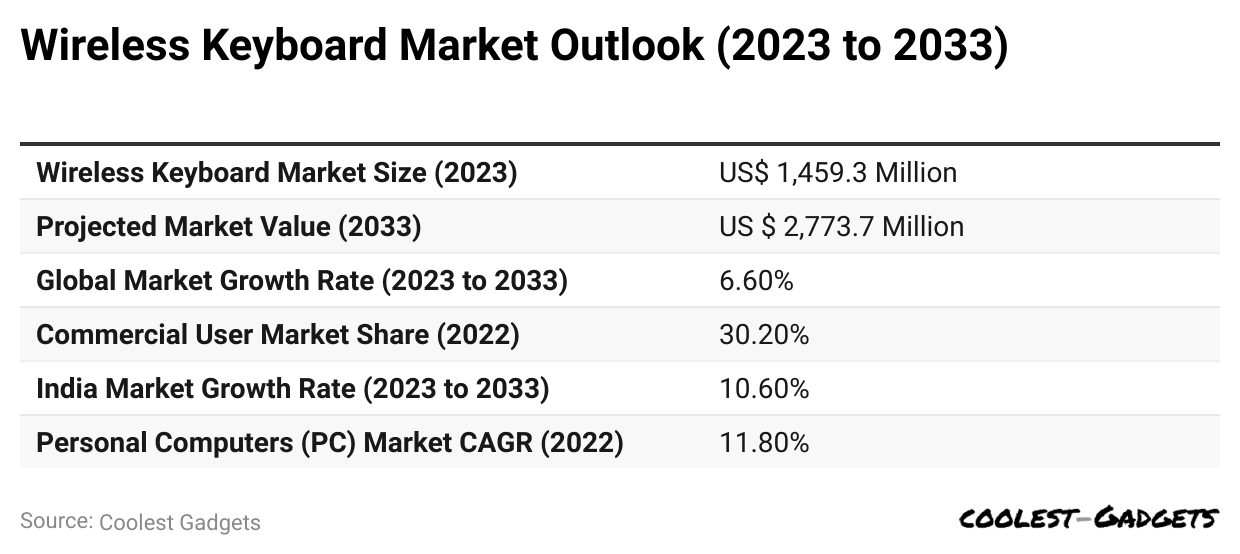Technology
Wireless Keyboards: The Future of Typing Is Here


The Rise of Wireless Keyboards
Wireless keyboards have become the modern staple for computing, offering the freedom to connect with various devices such as laptops, tablets, and smart TVs without the tangle of physical cables. Utilizing radio frequencies like WIFI or Bluetooth, these keyboards provide a seamless user experience and are often paired with a wireless mouse for convenience.
Technology Behind the Keys
Whether it's through infrared technology that uses light waves or radio frequency ranging from 27 MHz to 2.4 GHz, wireless keyboards have advanced to ensure stable and efficient connectivity. Bluetooth technology, in particular, has seen widespread adoption due to its ease of linking devices.
Market Penetration and Preferences
Wireless keyboards are not just for computers anymore; they have extended their reach to smart TVs and other smart devices. Despite traditional keyboards being more affordable and easier to set up, the allure of portability and connectivity has given wireless keyboards an edge in consumer preference. This shift is reflected in the wireless keyboard's 25.7% share of the global PC accessories market.
North America Leads the Charge
In 2022, North America dominated the wireless keyboard market with a 27.5% share, and it's expected to maintain its lead. Europe follows with an 18.3% share, and both regions are projected to experience growth, driven by the increasing use of PCs in various sectors and a booming gaming industry.
Challenges and Opportunities
Even with the growing demand for wireless keyboards, the cabled keyboard market held a significant value in 2017. However, the hassles of specific connectors and cable maintenance may push consumers towards the more convenient wireless options. The corporate sector, personal use, and e-sports are key areas where wireless keyboards are gaining traction, though this widespread use could potentially slow market growth.


Segment Insights
The personal computer (PC) segment is poised to generate substantial revenue in the wireless keyboard market, with smart TV applications also expected to grow notably. The Windows platform continues to dominate due to the prevalence of PCs with Windows OS, while the Android segment is gaining ground with an increasing number of users.
COVID-19 Impact and Gaming Boom
The pandemic saw a surge in online gaming, consequently boosting the demand for wireless keyboards among gamers. Companies like Logitech have responded with specialized gaming keyboards, enhancing the gaming experience. This trend is supported by rising sales from gaming giants like Nintendo and Tencent.
Market Dynamics in India and Ergonomic Trends
In India, the demand for computer keyboards is rising, with a focus on affordability, portability, and multilingual support. The market is expected to grow at a CAGR of 2.0% from 2023 to 2033. Additionally, the growing emphasis on ergonomic keyboards is influencing market dynamics, with manufacturers focusing on designs that promote comfort and reduce strain.
US Market Snapshot
The United States holds a commanding 65.4% share of the North American keyboard market, with ergonomic keyboards becoming increasingly popular due to their support and comfort features. This trend indicates a competitive market for computer keyboards in North America.
Strategic Moves by Companies
With the aim of expanding their market presence, companies are engaging in strategic alliances, partnerships, and product innovation. The global wireless keyboard market is anticipated to grow at a significant CAGR, driven by the adoption of wireless keyboards by professionals and PC gamers.


The Road Ahead for Wireless Keyboards
Despite challenges like higher costs and battery life concerns, wireless keyboards' advantages in comfort and flexibility make them a popular choice. Continuous innovation and strategic market approaches are expected to support growth in this sector. As wireless device adoption and user preferences evolve, the future looks bright for the wireless keyboard market.


Hello! I’m Roger Jenkins, your go-to source at ReportingTheNews.com. I’m a USC graduate who combines journalistic precision with a Trojan’s passion. Based in sunny Los Angeles, my days are filled with more than just sunshine; they’re about capturing stories that resonate.
Beyond the newsroom, I’m an avid triathlete. Swimming, cycling, and running are more than just sports to me; they embody my commitment to discipline, focus, and a healthy dose of competition.
My love for travel takes me far and wide. Guadalajara, with its vibrant culture and unforgettable tacos, has a special place in my heart. I’m always searching for the next great story or a hidden culinary treasure.
At home, Nala, my energetic pet, is my constant companion. Together, we’re known in our neighborhood for our morning runs and evening strolls.
I’m driven by a belief in the power of storytelling to unite communities. Join me as we explore impactful narratives and stay updated with the latest news. You’ll also get a peek into my sports passions and travel escapades.
Want to get in touch? Follow me on Instagram for more insights and updates.







